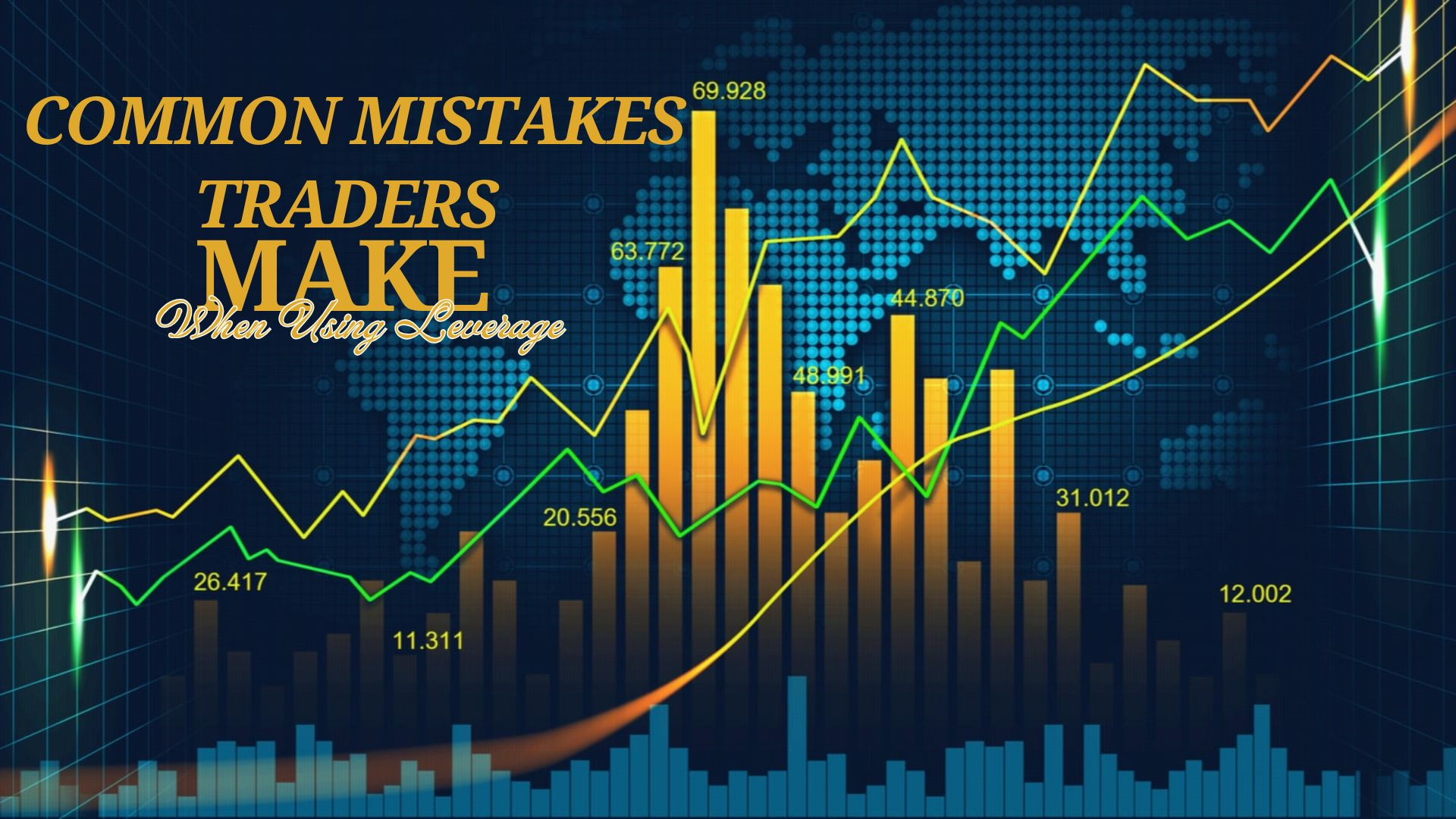Common Mistakes Traders Make When Using Leverage
Leverage can increase one’s profit, but it can also cause losses at alarming rates at a time that isn’t executed with care. Many traders, especially beginners, get trapped into bearing common traps that will wipe out their accounts in the blink of an eye.
Author:Xander OddityReviewer:Dr. Felix ChaosphereMar 17, 202512.3K Shares164.3K Views

Using leverage in the forex market is one of the powerful tools that traders can use by controlling larger positions with small amounts of capital. But there is a significant responsibility that comes with great power. Leverage can increase one’s profit, but it can also cause losses at alarming rates at a time that isn’t executed with care.
Many traders, especially beginners, get trapped into bearing common traps that will wipe out their accounts in the blink of an eye. In this article, we explore some of the most commonplace tradespeople errors when using leverage and how to prevent them.
1. Overleveraging And Ignoring Risk Management
Traders make one of the most critical mistakes, however; they use too much leverage without a proper risk strategy. The leverage ratio in high leverage forex brokerscan be as much as 1:500 or even higher. This looks great, but it also means that a very small market movement against you will kill your account.
This is all to increase the chances of your broker making a margin call on you (closing your position when you have insufficient funds to keep it open). To prevent this from happening, traders must be very watchful when making use of leverage and likewise, place stop-loss orders to cover their capital.
2. Lack Of Understanding Of Leverage Mechanism
There are plenty of traders who jump into leveraged trading without knowing its fundamentals. Therefore, they may feel that higher leverage always corresponds to higher profits. Leverage, however, increases both gains and losses.
One misunderstanding is that using leverage is akin to ‘free money’, however, it just increases the exposure to the market. On the issue of leverage, traders need to first understand margin requirements, what the size of the lot is, and how leverage works in affecting the trader’s current position.
3. Ignoring Stop-Loss Orders
Many people do not use stop-loss orders which is one of the mistakes traders make. Set the price level at which a trade is closed automatically to limit a potential loss and conserve capital. Trade, sadly, many traders will return manually stop loss orders, that they will close the losing trades.
Prices can change with the market, however, market conditions do change at a moment’s notice. Traders without a stop loss in place have the risk of losing more than they planned, even by wiping accounts. Putting a stop-loss strategy in place is to manage risk and keep losses from exceeding tolerable levels.
4. Trading Without A Clear Strategy
Most traders are without a thing out there on a genuine way to trade successfully, but most traders enter the market without a clear strategy. Trades can be based on markets in the news, news events, rumors, and emotions, among others rather than technical analysis and fundamentals.
With no strategy, it tends to be very impulsive, and it increases the odds of losing. Before applying leverage such as margin trading, a trader needs to ascertain a strategy that includes entry, exit, risk-return proportion and rules for the size of all the positions.
5. Emotional Trading And Overconfidence
The leverage itself is a source of psychological challenge to the traders and it becomes the source of emotional decision-making. Some traders experience a few profitable trades, get overconfident, and increase their leverage while not taking into account the risks.
However, traders who lose will panic and either overtrade or will bind not to cut their losses, expecting the market will turn around for them. Usually, emotional trading causes trading capital to run faster than the trader controls. Traders can avoid some emotional pitfalls and keep discipline on hand as it regards trading by maintaining discipline and sticking to a pre-defined trading plan.
6. Neglecting Market Conditions And Economic Factors
However, there are as many other economic factors that can influence the forex market as there are bodies that are involved in forex trading. Traders can be put on the wrong side of a trade if they disregard these factors.
Leveraged positions are very volatile and driven by news events. Traders can benefit from making more informed decisions about the market conditions by staying informed about what is going on in the market and using the economic calendars.
7. The Problem Of Failing To Adjust Leverage By Experience Level
There are a lot of beginner traders who use the same leverage ratio that experienced traders use. Yet, professional traders know how to handle risk management and take appropriate leverage. The lower the leverage ratio of a new trader, the better they can manage risk.
When they get enough experience and confidence in their trading 'weapons', they can slowly crawl the level of risk that jeopardizes them. The main thing to focus on isn’t high returns with too much leverage, it is more about developing or learning skills instead of specific skills.
8. Holding Leveraged Positions Overnight Without Consideration
Finally, a lot of traders don’t take into account all the effects of overnight leveraged positions. However, Forex brokers charge overnight swap fees for positions that are not settled before the trading day expires. Time the fees can eat into profits too. Furthermore, traders hold leveraged positions overnight expose hanging traders to the risk of an unexpected market gap, where prices could open at a vastly different price than where they closed. This should be your activity to check whether it is worth your risk and the cost of holding your position overnight or not.
9. Lack Of Proper Capital Allocation
One of the things common to traders is that they will put a lot of capital into one single trade and think that the trade will be a done deal. However, even the best Launchpad for a trade can be disappointing.
10. Not Reviewing And Learning From Past Trades
The fact that many traders repeat the same mistakes over and over is simply because they do not spend the time necessary to study their past trades. Traders can keep a note of every trade entry, trade exit, reasons for taking a trade, and results of trade and use it as a journal to identify categories in one’s trades and their decision-making. Forex traders can review past trades to refine their strategies and fix the things which they have gone wrong in the forex market.
Conclusion
In forex trading, leverage can become a double-sided sword. This means that it allows to increase the profits but at the same time increases the risk of massive losses. Common traps for many traders include overleveraging, not utilizing as much risk management as well as trading emotionally, and not knowing how leverage mechanics work.
Knowing how to develop a disciplined approach, staying informed about the market condition, and continuing to learn from past trades, are key ingredients for a leveraged trader to turn into a successful one.
Jump to
1. Overleveraging And Ignoring Risk Management
2. Lack Of Understanding Of Leverage Mechanism
3. Ignoring Stop-Loss Orders
4. Trading Without A Clear Strategy
5. Emotional Trading And Overconfidence
6. Neglecting Market Conditions And Economic Factors
7. The Problem Of Failing To Adjust Leverage By Experience Level
8. Holding Leveraged Positions Overnight Without Consideration
9. Lack Of Proper Capital Allocation
10. Not Reviewing And Learning From Past Trades
Conclusion

Xander Oddity
Author
Xander Oddity, an eccentric and intrepid news reporter, is a master of unearthing the strange and bizarre. With an insatiable curiosity for the unconventional, Xander ventures into the depths of the unknown, fearlessly pursuing stories that defy conventional explanation. Armed with a vast reservoir of knowledge and experience in the realm of conspiracies, Xander is a seasoned investigator of the extraordinary.
Throughout his illustrious career, Xander has built a reputation for delving into the shadows of secrecy and unraveling the enigmatic. With an unyielding determination and an unwavering belief in the power of the bizarre, Xander strives to shed light on the unexplained and challenge the boundaries of conventional wisdom. In his pursuit of the truth, Xander continues to inspire others to question the world around them and embrace the unexpected.

Dr. Felix Chaosphere
Reviewer
Dr. Felix Chaosphere, a renowned and eccentric psychiatrist, is a master of unraveling the complexities of the human mind. With his wild and untamed hair, he embodies the essence of a brilliant but unconventional thinker. As a sexologist, he fearlessly delves into the depths of human desire and intimacy, unearthing hidden truths and challenging societal norms.
Beyond his professional expertise, Dr. Chaosphere is also a celebrated author, renowned for his provocative and thought-provoking literary works. His written words mirror the enigmatic nature of his persona, inviting readers to explore the labyrinthine corridors of the human psyche.
With his indomitable spirit and insatiable curiosity, Dr. Chaosphere continues to push boundaries, challenging society's preconceived notions and inspiring others to embrace their own inner tumult.
Latest Articles
Popular Articles
